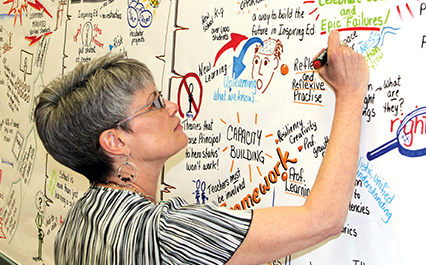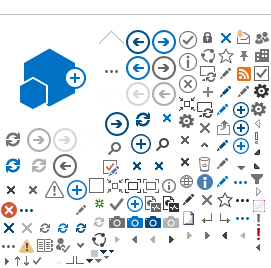Page Content
Learning from the experiences of our colleagues
“Kia kaha,” said our New Zealand colleague, after two days of intense discussion during the Professional Development Curriculum Symposium at Barnett House in early May. The Maori phrase means “be strong,” and Louise Green, the principal at Khandallah School in Wellington, New Zealand, assured attendees that anyone involved in curriculum redesign would need a great deal of strength indeed.
Green was heavily involved in New Zealand’s curriculum redesign process—an experience that seems to mirror Alberta’s. For starters, the New Zealand curriculum framework document aims to motivate every school to build a local curriculum that puts students first. The first part of the framework proclaims to be a “transformative vision for education.” As well, it was produced after extensive open consultation and, as a result, has been the cause of great excitement and extremely high buy in from teachers, parents and students. Sounds remarkably like Alberta’s Inspiring Education initiative, doesn’t it?
The second part of the New Zealand curriculum did not inspire the same level of support, however. The key competencies, devised by Department of Education employees and a select group of teachers, do not align with the curriculum’s transformative vision. Many teachers have commented that the “big ideas” in the first part of the framework do not match the outcomes in the second part. In spite of these concerns, teachers and administrators have set about designing their own curricula, based on the framework, to meet the needs of their communities.
As in Alberta, teachers and government in Finland are also in the midst of curriculum redesign. World-renowned as a leader in education excellence, the nation is nonetheless renovating its entire education system.
Key to that process is the idea that, as the Finnish population ages, it is more important than ever to support every student’s potential. Curriculum redesign has been a collaborative affair, with teachers, parents, authorities and researchers all working together to strengthen the already strong system. Their goal is to create better conditions for the schools’ educational work, for the students’ meaningful learning and for a sustainable future. Teachers are given a great deal of autonomy to achieve this goal.
Assessment “drives the bus”
Recently, both Finland and Alberta experienced a slight dip in their Programme for International Student Assessment (PISA) scores. Sam Sellar, a conference delegate from the University of Queensland in Australia, noted that many other jurisdictions are experiencing similar declines. He reminded attendees that “the power of comparison is seductive and can change our lives even if we try to resist it.” It is against this backdrop of international comparisons that both Finland and Alberta are embarking on curriculum redesign. This climate of competition raises the question: Can we resist the urge to “be the best” as determined by external forces and instead focus on what is best for our students?
The Learning Curve website, developed by the economist intelligence unit of the educational publishing giant Pearson, underscores the commercialization of PISA. Through the website, Pearson claims to “contribute to the global conversation on learning outcomes; to help positively influence education policy at local, regional and national levels. The data and analysis on this website will help governments, teachers and learners identify the common elements of effective education.”
Because educational policy makers want their jurisdictions to score well, they create policies that enhance learner outcomes as measured by PISA. In other words, PISA drives educational policy in many jurisdictions. This, even as departments of education around the world proclaim that their only aim is to put students’ learning first.
New Zealand’s curriculum redesign process did not escape the pressures of competitive assessment either. When a new governing party came into power, it immediately imposed national education standards, which were developed by the Department of Education. Rosemary Hipkin, chief researcher for the New Zealand Council for Education Research, said, “Assessment needs to reflect the aims of the curriculum. Assessment always drives the bus, no matter what we say.”
What we learned
Throughout the two days of curriculum redesign discussions, several common themes emerged:
Measuring learner outcomes through standardized testing leaves no room for those who don’t learn or teach in a linear way. Space needs to be created within the curriculum and within pedagogy for these students and teachers.

Words are powerful and those engaged in curriculum redevelopment need to be mindful of the words they use to describe curriculum and education.
Teachers need the opportunity to take risks, to celebrate successes and to embrace and learn from failures.
Assessment needs to be seen as the students’ opportunity to take pride in their work.
Education is about the eternal quest for meaning.
If Alberta’s teachers don’t speak up about what they are doing in the classroom and define how Inspiring Education is implemented, then someone else will do it for them. Teachers must be part of the conversation.
No wonder our new friend from New Zealand wished us “kia kaha.” ❚
